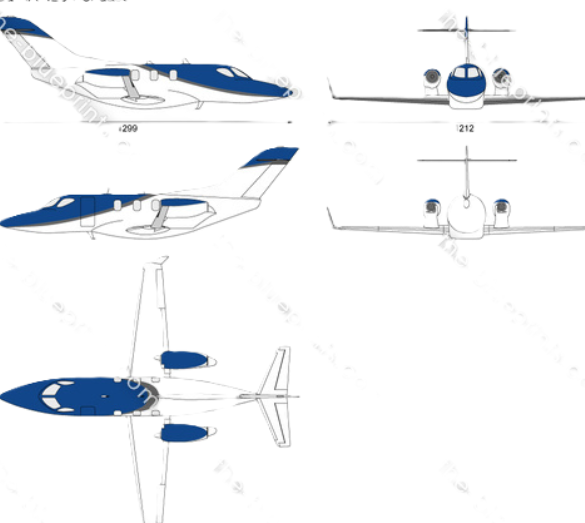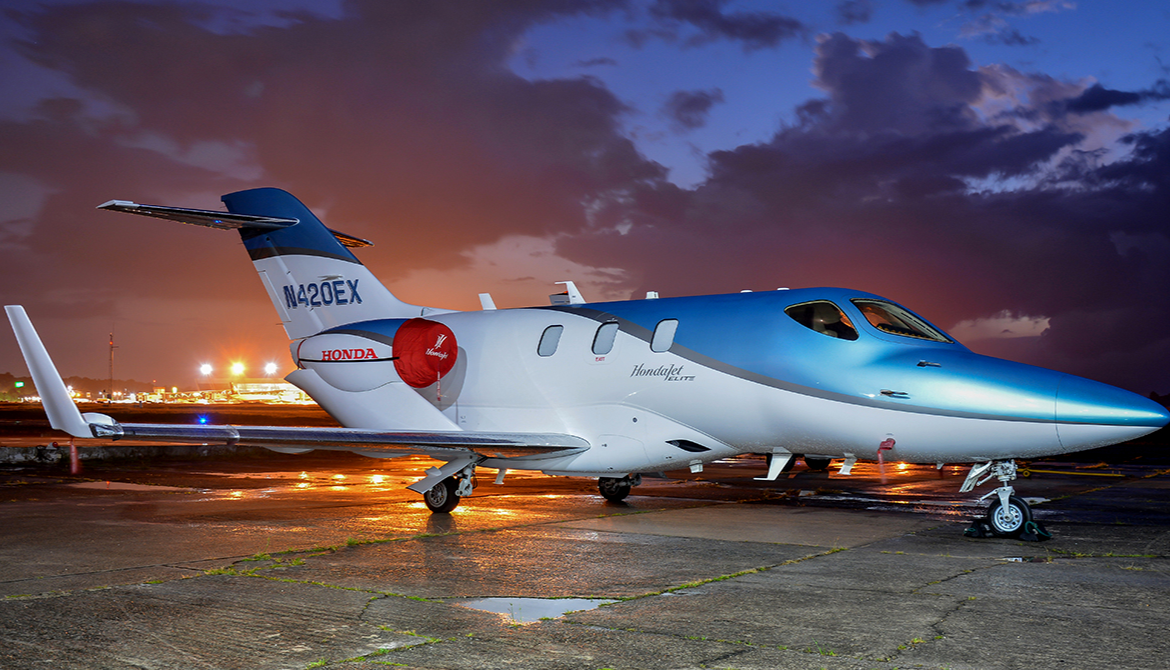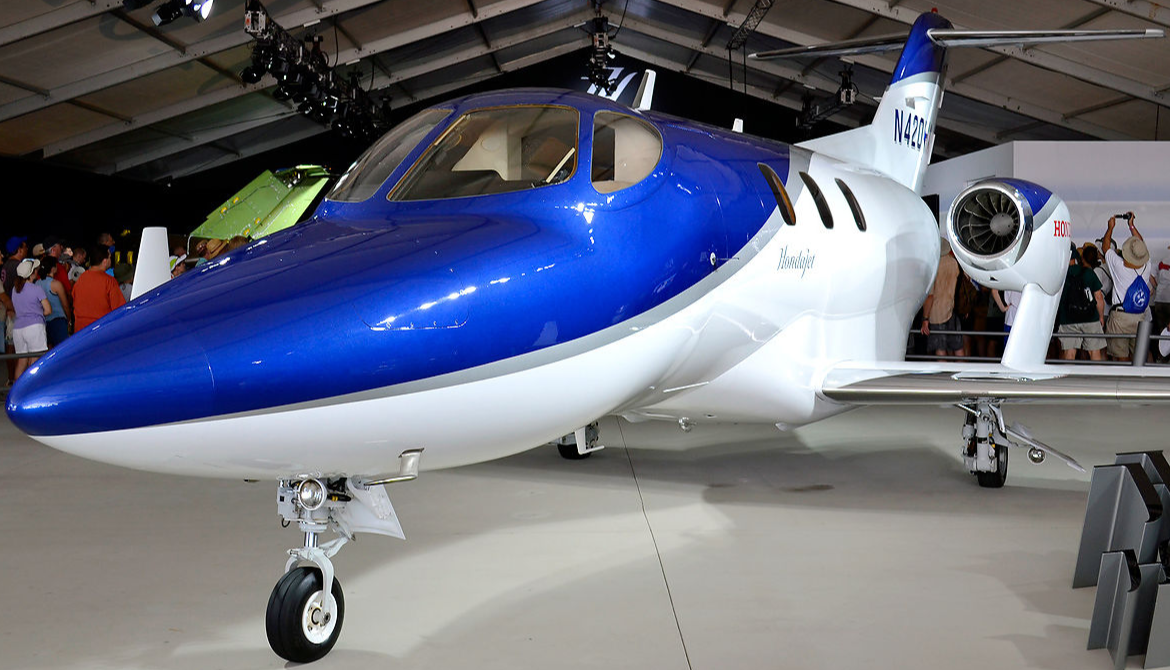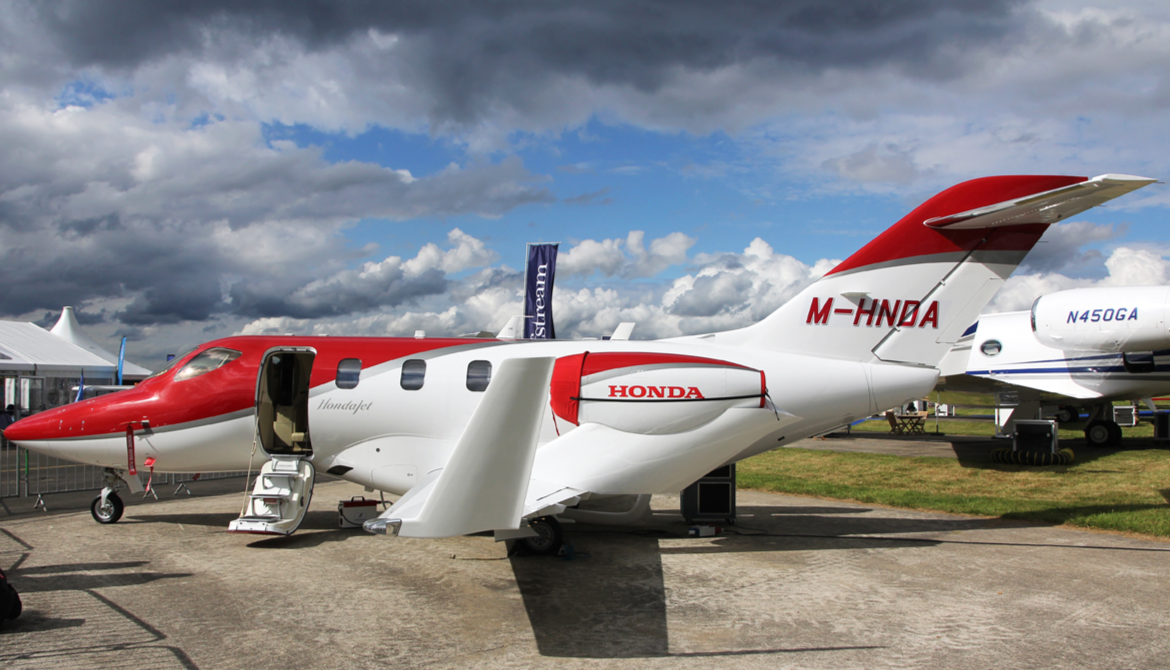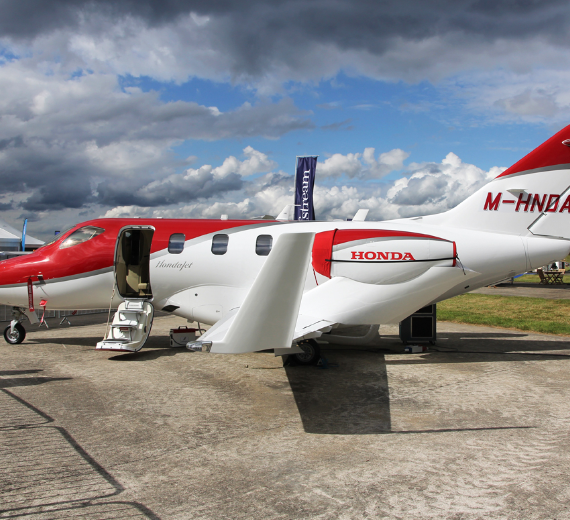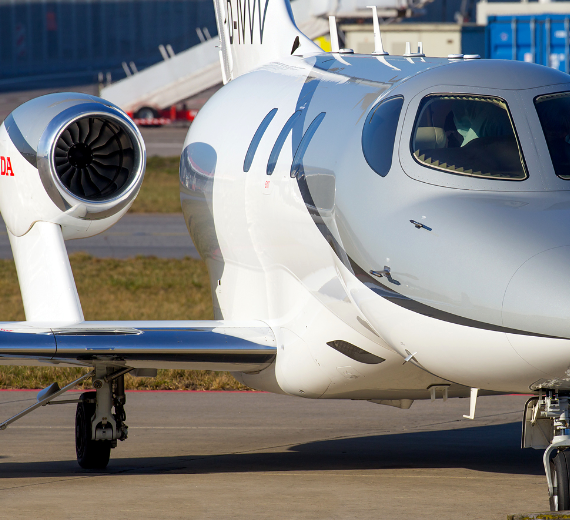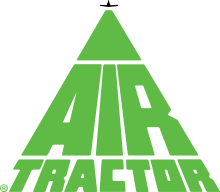Honda HA-420 HondaJet
 |
|
| General information | |
|---|---|
| Type | Light business jet |
| National origin | JapanUnited States |
| Manufacturer | Honda Aircraft Company |
| Status | In production, in service |
| Number built | 250 (as of February 2024 |
| History | |
| Manufactured | December 2015–present |
| First flight | December 3, 2003 |
.
History Honda Aircraft Company
Honda HA-420 HondaJet
Manufactured December 2015–present
First flight December 3, 2003

The Honda HA-420 HondaJet is a light business jet produced by the Honda Aircraft Company of Greensboro, North Carolina, United States. Original concepts of the aircraft started in 1997 and were completed in 1999. It took its maiden flight on December 3, 2003, received its FAA type certificate in December 2015, and was first delivered that same month. By the end of 2021, 200 jets had been delivered.
The seven- to eight-seat aircraft has a composite fuselage and an aluminum wing and is powered by two GE Honda HF120 turbofans unusually mounted on pylons above the wing. It can cruise at 420 kn (780 km/h), and has a 1,400 nmi (2,600 km) range. The HondaJet has received several aeronautic design and innovation accolades.
Development

Honda began to study small-sized business jets in the late 1980s, using engines from other manufacturers. The Honda MH01 turboprop used an all-composite construction, and the Honda MH02 was fabricated and assembled at Mississippi State University's Raspet Flight Research Laboratory in the late 1980s and early 1990s. The MH02 was a prototype using carbon fiber/epoxy composite materials and was the first all-composite light business jet to fly. Flight testing on the MH02 continued through 1996, after which the aircraft was shipped to Japan.
Designer and company founder, Michimasa Fujino, began sketching the HondaJet in 1997, and the concept was solidified in 1999. According to Fujino, design of the HondaJet nose was inspired by Salvatore Ferragamo shoes. Testing in the Boeing windtunnel indicated a valid concept in 1999
0
KmCeiling
0
KmCombat RANGE
0
Km/hAircraft Speed
0
Max Crew
Photo Gallery
Honda Aircraft Company
Honda HA-420 HondaJet


Honda Aircraft Company
Honda HA-420 HondaJet
General Info
-
-
- Crew: 1-2
- Capacity: 7 occupants (8 in Europe), crew included
- Length: 42 ft 7 in (12.99 m)
- Wingspan: 39 ft 9 in (12.12 m)
- Height: 14 ft 11 in (4.54 m)
-
Powerplant
-
-
- Pressurization: 8.8 psi (0.61 bar)
- Cabin height: 4.83 ft (1.47 m)
- Cabin width: 5.00 ft (1.52 m)
- Powerplant: 2 × GE Honda HF120 turbofan, 2,050 lbf (9.1 kN) thrust each
-
Performance
- Cruise speed: 486 mph, 782 km/h) FL300
- Range: 1,437 nmi (1,653 mi, 2,661 km) NBAA fuel reserve IFR Range with 4 occupants
- Service ceiling: (13,000 m)
- Rate of climb: 4,100 ft/min
- Fuel burn at high-speed cruise: 999 lb/h (453 kg/h) at 419 kn TAS at FL330
- Fuel burn at long-range cruise: 543 lb/h (246 kg/h) at 360 kn TAS at FL43
Related development
-
-
Aircraft of comparable role, configuration, and era
-
Links to Youtube & Others
Introducing the HondaJet Elite II, a continuation of the Elite program's vision to redefine the very light jet category with superior performance and efficiency born from aerodynamic breakthrough. We continue to set new standards in range, fuel efficiency, performance, comfort and technology, to realize the future of the light jet category, because even the best can get better.
Honda Aircraft Company
Honda HA-420 HondaJet
With an expanded range of 1,547nm, increased fuel capacity, and gross weight increase, users will enjoy greater mission capability and more flexibility than ever before
Youtube Link
Enjoy an exceptional level of tranquility with improved acoustic treatments throughout the cabin to reduce noise, enhancing relaxation and productivity.
